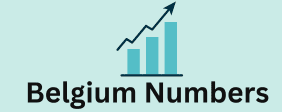It was on his return from a trip to Africa that Albert Londres came up with this formula at the start of his book ‘Terre d’ébène’: “Our job is not to please, nor to harm, it is to put the pen to the wound.” The formula has remained famous. The reporter was thus responding to the violent attacks of the colonial lobby which tried to silence the one who denounced the inhumane treatment reserved for black workers on the Congo Ocean railway in 1929. Today, it is a much more complex question that is agitating (among others) the world of information, the use of AI often perceived as a particularly formidable threat. Updated, the formula would then be the following: The intelligence of the pen in the artificial wound.
Re-presenting a story
The document is astonishing. And this from the first image (available on Youtube ). Two young black men seem to stare at us. They are filmed at chest height. Behind them, a instagram database cracked desert, and a cow lying dead. The camera moves to the right and reveals the presence of a third character . In a few seconds, the iconic summary of a visibly desperate humanitarian situation. In voiceover, the English commentary confirms: “Shepherds for thousands of years, they only know their herds, watering holes and the Koran… An ancestral wandering brutally interrupted by drought. Then it is an overhead shot filmed using what we imagine to be a drone.
The Sea Shepherds, AI documentary in Somalia (1976) Stanislas de Livonnière
The rest of the story is that of a population transfer organized with the means of the Soviet army of the time. Convoys of trucks, Ilyushin planes, and the shepherds find themselves on the shores of the Indian Ocean. All become fishermen. A brutal transition for these women and men who had never encountered these machines. These uniforms, this sea. All this, before your eyes, with the sound of engines . The lapping estonia phone number library waves, close-ups of faces and local music. Except for one remark, and the precision appears from the opening. True story” is displayed, but with “sound and computer-generated image . Barawe, Somalia, 1975”. In other words it was 50 years ago.And everything that is shown .I like everything that is heard, is entirely done by AI. The amazement is all the greater because at the end of the document . A mention reveals where this story comes from Pen in the Artificial Wound.
Based on a report by Christian Hoche
Winner of the Albert Londres prize in 1978″. In other words, here you are, in short, in the presence of the first Albert Londres prize for written press reconstituted in video via bfb directory generative technologies. Enough to feed more than a curiosity about the author and his intentions. “I work a bit like a comic book artist. Explains Pen in the Artificial Wound Stanislas de Livonnière, head . Data and Innovation unit at Le Parisien Aujourd’hui en France. Passionate about the story board to be up I came across C. Hoche’s article by chance. Signed by a rigorous journalist, the text constitutes the basis of my production.
